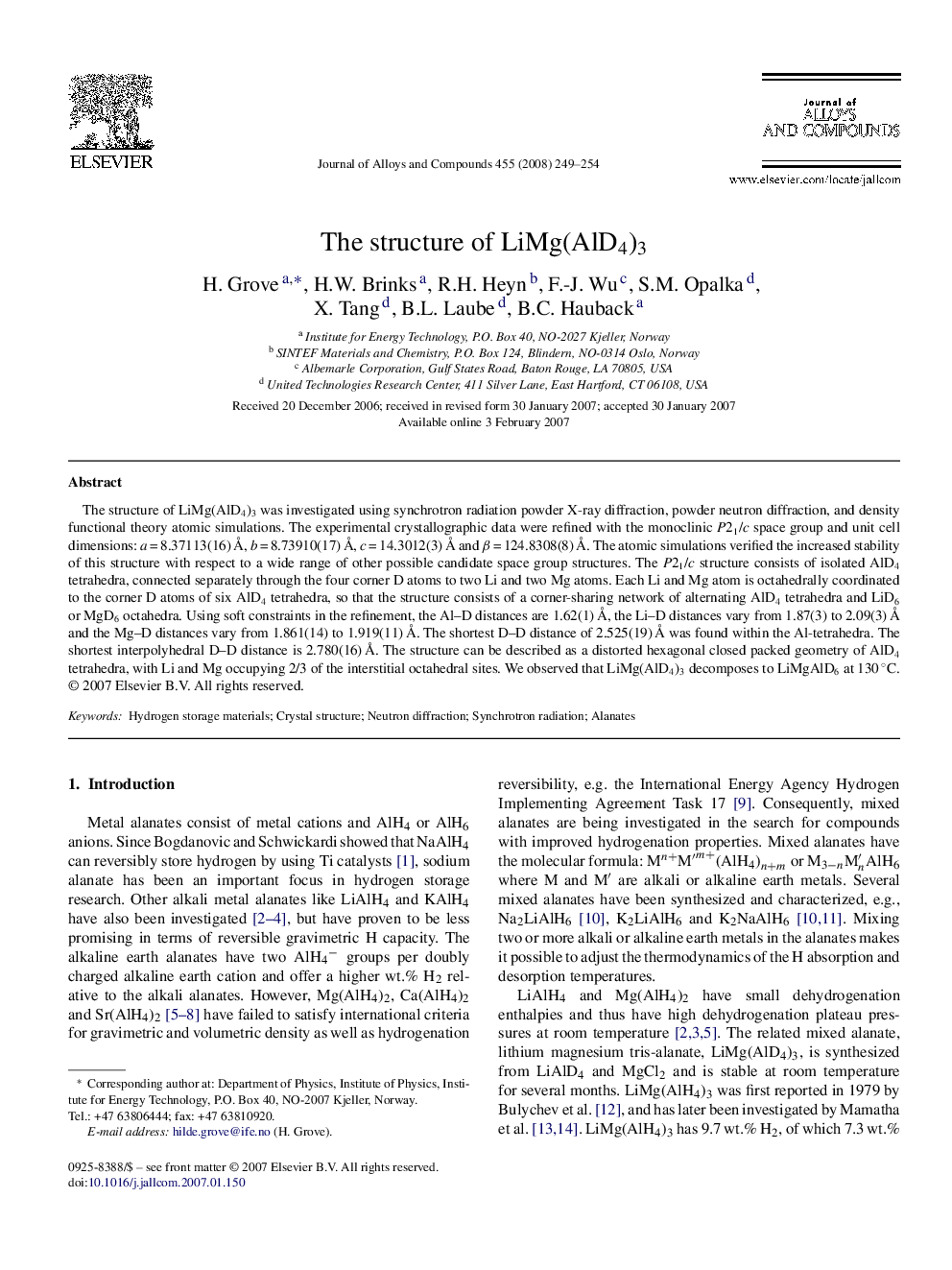| Article ID | Journal | Published Year | Pages | File Type |
|---|---|---|---|---|
| 1624626 | Journal of Alloys and Compounds | 2008 | 6 Pages |
The structure of LiMg(AlD4)3 was investigated using synchrotron radiation powder X-ray diffraction, powder neutron diffraction, and density functional theory atomic simulations. The experimental crystallographic data were refined with the monoclinic P21/c space group and unit cell dimensions: a = 8.37113(16) Å, b = 8.73910(17) Å, c = 14.3012(3) Å and β = 124.8308(8) Å. The atomic simulations verified the increased stability of this structure with respect to a wide range of other possible candidate space group structures. The P21/c structure consists of isolated AlD4 tetrahedra, connected separately through the four corner D atoms to two Li and two Mg atoms. Each Li and Mg atom is octahedrally coordinated to the corner D atoms of six AlD4 tetrahedra, so that the structure consists of a corner-sharing network of alternating AlD4 tetrahedra and LiD6 or MgD6 octahedra. Using soft constraints in the refinement, the Al–D distances are 1.62(1) Å, the Li–D distances vary from 1.87(3) to 2.09(3) Å and the Mg–D distances vary from 1.861(14) to 1.919(11) Å. The shortest D–D distance of 2.525(19) Å was found within the Al-tetrahedra. The shortest interpolyhedral D–D distance is 2.780(16) Å. The structure can be described as a distorted hexagonal closed packed geometry of AlD4 tetrahedra, with Li and Mg occupying 2/3 of the interstitial octahedral sites. We observed that LiMg(AlD4)3 decomposes to LiMgAlD6 at 130 °C.
